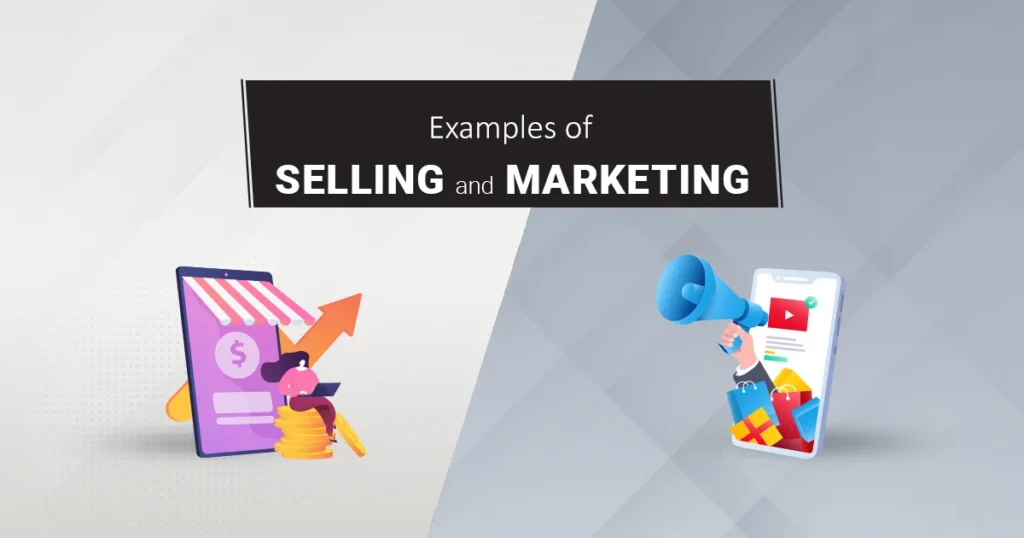Senior leaders and founders find it helpful to distinguish between marketing vs selling to address a long-term plan with respect to resource allocation, the structure of teams, and brand position. Demand is created in marketing by managing perceptions, generating leads, and creating value.
Selling makes transformations in demand as revenue conversion through transaction-facilitating processes. Businesses often misalign their go-to-market strategies under such circumstances, over-emphasizing quick wins or underestimating brand equity.
Thus, this article presents an unstaged, fleet, and then very strategic framework to enlighten on the role of both compared, and the specific use of either to enunciate in sustainable business growth.
What is Selling in Marketing?
Now, before venturing into the differences, it is also important to note what selling in marketing is all about. Because selling is the very last stage of the marketing process, concentrating all efforts on bringing a prospective customer into a real customer, either by persuasion, negotiation, or transaction.
Product-oriented Selling. It is a service in which selling is concerned, firstly from the angle of product, pushing the customers to purchase, regardless of whether those services or products meet customers’ long-term needs or not.
However, marketing is a lot broader in scope and tends more toward the strategy angle. It is where the effect starts long before there is any offer for selling the product, and continues even after being sold. Marketing is about understanding the needs of customers, developing a product that satisfies their demand, proper positioning, and after-sales satisfaction.
Is Marketing Part of Sales?
A common question asked in business strategy circles is, “Is marketing part of sales?” The answer is both yes and no, depending on the specific business model.
On an operational basis, marketing and sales operate as two separate functions.
From a broader strategic view, marketing includes sales-On the one hand, selling is among the plethora of activities under the marketing umbrella, including market research, product development, pricing, distribution, branding, and customer service.
See also: Performance Marketing vs Brand Marketing: Key Differences Explained
Therefore, sales can be regarded as a subset of marketing. Marketing prepares the ground for a sale by creating brand recognition, generating leads, and putting together a value proposition.
The Main Goal of Marketing vs Selling
So, to understand marketing’s primary function versus selling, you need to look at the mindset that drives each discipline.
| Aspect | Marketing | Selling |
| Focus | Customer-centric | Product-centric |
| Objective | Long-term brand loyalty and market presence | Immediate revenue through product transactions |
| Approach | Pull strategy – attract customers through value and engagement | Push strategy – persuade customers to buy |
| Time Horizon | Long-term | Short-term |
| Scope | Broad: includes advertising, research, branding, and customer support | Narrow: focuses on closing sales |
See also: Influencer Marketing Examples with Campaign Insights, Meaning
Thus, while marketing focuses on providing for customer needs and building relationships, selling’s primary focus is to achieve short-term sales targets.
Marketing and Selling Difference: A Strategic Overview
Let us now examine the marketing and selling differences across a few strategic parameters:
Philosophy
Selling is based on a philosophy of “make and sell” — that is, make a product and then find means to sell it.
Marketing is underpinned by a “sense and respond” approach — identifying what customers want and then fitting the product around that.
Orientation
Selling is internally focused; the objective is to get goods out of the door.
Marketing focuses outward; its goal is to understand and satisfy customers’ needs better than the competition.
Relationship With the Customer
Selling considers the customer just as the end-point of a transaction.
Marketing accounts for the customer as an asset that needs to be earned and retained over the long term.
Planning Horizon
Selling is usually a quarterly game.
Marketing works on brand building and customer engagement for long-term sustainable growth.
See also: What is Brand Marketing? Importance, Strategy, and Examples Explained
Customer Satisfaction
Selling looks to close deals with no regard for customer satisfaction in the long term.
Marketing looks at providing an experience, satisfaction to the customer, and value delivery.
Examples of Marketing vs Selling

Let’s take a look at how marketing versus selling manifests in the real-world setting of business:
Example 1: Auto Industry
Selling: A car salesperson is trying to convince you to buy by extolling the features of the car and giving discounts.
Marketing: A car company launches an advertising campaign about family safety, fuel consumption, and customer testimonials-from emotional resonance and building trust.
Example 2: Technology
Selling: The vendor pushes the software subscription aggressively without understanding your business needs.
Marketing: The company organizes webinars, publishes use cases, and provides free trials to show its relevance and utility.
Example 3: E-Commerce
Selling: Flash sales, limited-time offers, and buy one, get one free are used to create urgency.
Marketing: Email Newsletter, Loyalty programs, and personalized recommendations based on your Browsing behaviour.
In any case, selling is about the transaction, while marketing is about changing the customer journey.
Why the Distinction Matters?
Widespread misuse in defining marketing vs selling amounts to flaws in business strategies. For example,
Market acceptance could be a huge question mark without doing proper market research on launching a product after making huge investments in the sales team.
Marketing should be neglected because the name and information get locked away in the customers’ brains until they grow into adults bearing names in international states.
The companies that get to the top of today’s competitive market are those that know how to smoothly blend the operations of marketing and selling. The customer journey itself begins at the marketing funnel and goes all the way through the sale to retention and advocacy.
See also: Future of Digital Marketing: Scope, Trends & Opportunities
Overlapping of Marketing and Selling
The word ‘sell’ means something quite different from ‘market,’ even though selling and marketing do not stay apart. Here are the overlaps:
- Lead conversion: Marketing generates leads; selling closes them.
- Customer feedback: Feedback gathered during sales meetings may have a bearing on marketing.
- Cross-functional campaigns: Launch of product lines, holiday sales, and trade events represented a guiding light for a joint effort from two fronts.
The stronger and better-aligned marketing and sales teams nourish the likelihood of hitting key growth metrics, improving customer satisfaction, and reducing churn.
Conclusion
Differentiation of marketing vs selling-not only for marketing vs selling professionals but equally so for a business owner, entrepreneur, and strategist very important.
When selling focuses on short-term profitability, marketing concentrates on long-term growth. The lack of either could mean opportunity loss, or inconsistently presenting the business brand, or failing to meet customer expectations.
By balancing the two areas, the company should close sales now and earn loyalty later.





